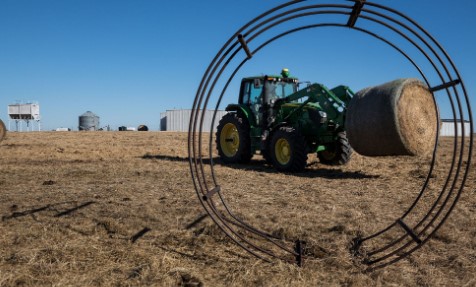By Ryon Walker
Achieving high pregnancy rates is an important goal in every cow-calf operation. After every breeding season, we are either satisfied with the results or wondering why our pregnancy rates were so low and focusing on ways to improve them.
Traditional thinking trains us to be satisfied with our results when we have met the industry average, or are as good as, if not better than, our neighbor’s pregnancy rates. Nontraditional thinking should redirect our focus more on the causes of some of these failures and on correcting or minimizing the problem.
Reproductive failures can occur in any cow-calf operation and lead to a significant chunk of the financial loss incurred from that calf crop.
Reproductive failures can occur in any cow-calf operation and account for a significant chunk of the financial loss incurred from a poor calf crop. Let’s take a look at the top 5 reproductive failures that I believe are often seen in a cow-calf operation, beginning with No. 5.
5. LEAVING THE BULLS IN TOO LONG
I can already tell that some of you are shaking your head “yes” in agreement with this statement. This is not scientific but rather common sense. The longer we leave the bulls in with the cows, the more likely we are to shift some of the herd to calve later in the season. This ultimately causes some of the cows to fall out of the herd because they come up open. We have trained some of those animals that it is OK to go through several attempts to get bred. Sometimes when those animals are stressed prior to or during the breeding season, it makes it that much easier for that animal to fall out of the breeding season. There are also other pitfalls to leaving your bulls in too long, including lack of uniformity in your weaning date, weaning weight and marketing of calves. Although fertility is lowly heritable, we can select for fertility within your management through a shorter breeding season. “Defined” is the key word in a defined calving season.
4. INFECTIOUS CAUSES OF REPRODUCTIVE FAILURE
A good herd health program is invaluable. It helps prevent certain diseases such as blackleg, pink eye, and respiratory diseases, as well as some diseases that can cause reproductive failure at different stages of pregnancy. Infection by these pathogens (viruses, bacteria, and protozoa) can significantly reduce your calving rate through abortions and stillbirths. Bovine viral diarrhea (BVD) virus can cause abortion if the cow is infected in the first three months of gestation and is transmitted through horizontal transmission (animal to animal) or vertical transmission (dam to fetus). Infectious bovine rhinotracheitis (IBR) virus can cause abortion from four months of gestation to term and is transmitted horizontally through direct contact or airborne. Brucellosis (Bang’s disease) is a bacterial disease that causes abortion at any stage of pregnancy and is transmitted through direct contact of milk or via the aborted fetus, afterbirth or other reproductive tract discharges. Leptospirosis is a bacterial disease that causes abortion within one to three months after infection and is transmitted directly between animals or indirectly through the environment. Vibriosis is a bacterial venereal disease that causes abortion between four and seven months of gestation and is transmitted to the bull from breeding infected cows and then passing the bacteria back to naïve cows during the breeding season. Neosporosis is a protozoal disease that causes abortions during mid-gestation and is transmitted by other host such as canines. Trichomoniasis is a protozoal disease that causes abortion during the first three months of gestation and is transmitted to the bull from breeding infected cows and then passing the protozoa back to naïve cows during the breeding season. In order to reduce the incidence of infectious disease in your herd, maintain proper nutrition (including a good mineral program), minimize stress, maintain a good vaccination program, and properly control internal and external parasites.

3. POOR NUTRITION
Most people would say that nutrition is the most important factor contributing to poor fertility, and I agree to an extent. Cows need to be in good body condition at calving to speed up uterine involution (recovery process) and reduce the days to first estrus. If a cow starts off in a low body condition at calving, the increase in nutrient demands during and after calving can delay a cow’s ability to recover from calving sooner and begin cycling again. Good management practices allow a producer to increase nutrient availability during the last month of gestation, depending on the nutritional status of the cow at that time, to ensure those cows are maintained at a body condition score of 5 to 6 at calving. Cattle that calve in a poor body condition can still conceive during a longer breeding season; however, those cattle will typically conceive later on in the breeding season, eventually falling out of the herd because she was open.
Click here to see more...